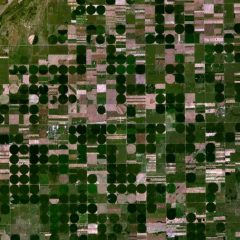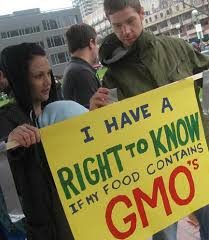Search results for “soy”:
Hygeia Analytics Mission and Goals Four Components of Hygeia Analytics Tips for Using the Site Dynamic Presentations Contact Us See also: Site Map and Keywords Hygeia Analytics- Who We Are Why Hygeia? Thoughts on Funding and “Sound Science” Acronyms and Glosary Click here to sign-up for updates from Hygeia Analytics! Hygeia Analytics Mission and Goals Our […]
Click here to view additional related posts Introduction and Nutrition 101 Good Fat, Bad Fat Fatty Acids Primer on Fatty Acids in Milk Impacts of Livestock Feeding Regimes Antioxidants Organic Farming Elevates Antioxidant Concentrations Maximizing Antioxidant Intakes Organic vs. Conventional Foods Milk and Dairy Products 2018 Grassmilk Fatty Acid Study 2016 Dairy Product Meta-Analysis […]
Click here to view additional related posts Introduction and Ag Biotech 101 Herbicide Resistant Crops Weed Resistance Bt Transgenic Crops Resistant Insects Health Risks and Safety Assessments Regulation of GE Crop Technology Marketing, Economics, and Public Relations Patent and Intellectual Property Issues Labeling Yields Key Historical Documents Donald Duvick Arpad Pusztai Other Introduction and Ag Biotech 101 From the […]
Historic posts are reprinted verbatim from their original source. Source: Andrew Pollack, The New York Times, May 15, 2001 Dr. William Folk, a professor at the University of Missouri, wants to genetically engineer soybeans to improve their nutritional value. But he faces more than scientific hurdles. He and Monsanto never agreed on how he might […]
Read More, References, Comment »
Historic posts are reprinted verbatim from their original source. Source: The Lancet, Volume 354, Number 9191, November 13, 1998 Allan Mowat Anthony J FitzGerald, Robert A Goodlad, Nicholas A Wright Peter Lachmann S. W. B. Ewen and A. Pusztai Sean Munro Brian Fenton et al D. C. Kilpatrick Brian Fenton, Kiri Stanley, Steven Fenton, Caroline Bolton-Smith Carl B […]
Read More, References, Comment »
Historic posts are reprinted verbatim from their original source. Arpad Pusztai, Ph.D., June 2001 Scarcity of safety tests How can the public make informed decisions about GM foods when there is so little information about its safety? The lack of data is due to a number of reasons, including: It’s more difficult to evaluate the safety […]
Read More, References, Comment »
Historic posts are reprinted verbatim from their original source. Source: Robert S. Greenberger, The Wall Street Journal, August 18, 1999 WASHINGTON — What do three rabbis, a Roman Catholic priest, a Seventh-day Adventist minister, an Eastern Orthodox cleric and a Buddhist who converted from Judaism have in common? The answer: They all are part of […]
Read More, References, Comment »
Historic posts are reprinted verbatim from their original source. Source: David Barboza, The New York Times, June 3, 2000 CHICAGO, June 3 — Frito-Lay announced in January that it would stop using biotechnology-based corn in its chips. Gerber Products has banned genetically modified ingredients from its baby food. And McDonald’s has asked its suppliers not […]
Read More, References, Comment »
Historic posts are reprinted verbatim from their original source. Source: Brandon Mitchener, The Wall Street Journal, June 5, 2002 BRUSSELS — In a vote reflecting deep divisions over biotechnology, the Environment Committee of the European Parliament voted narrowly in favor of more extensive labeling of foods and animal feeds containing genetically modified organisms. The committee voted to […]
Read More, References, Comment »
Historic posts are reprinted verbatim from their original source. Source: Editorial Desk, The New York Times, February 19, 2003 One of the most pervasive chemicals in modern agriculture is a herbicide called glyphosate, which is better known by its trade name, Roundup. When it was first introduced in 1974, by Monsanto, no one could have predicted […]
Read More, References, Comment »







